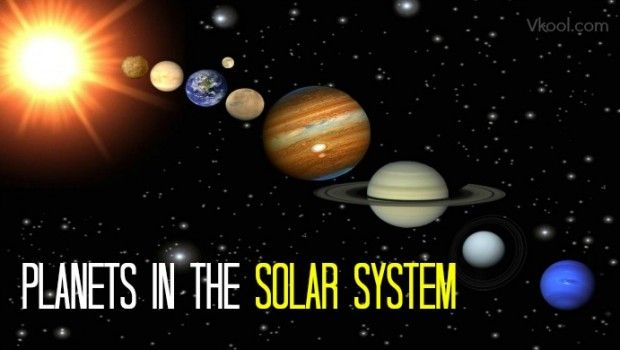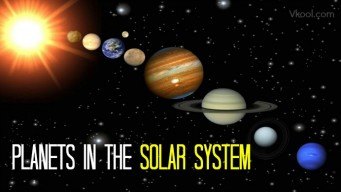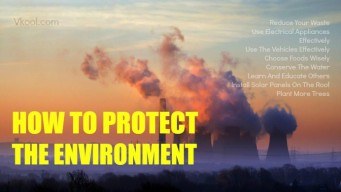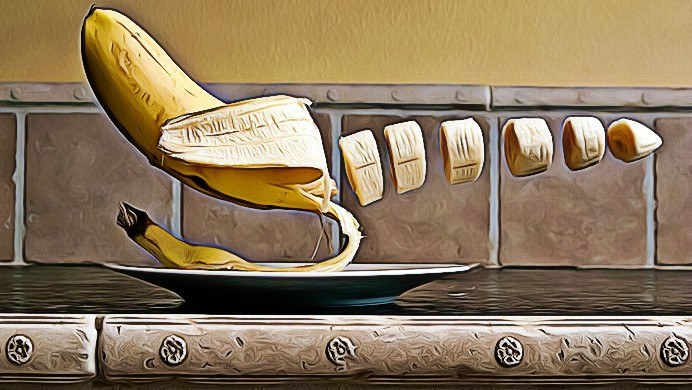
The number of planets in the solar system is an interesting topic for many people especially who are interested in astronomy. Interesting facts about 9 planets in the list of planets in the solar system have been widely given out by scientists.
List Of Planets In The Solar System – 9 Major Planets You Should Know:
The solar system formed 4.6 billion years ago. It consists of the Sun and eight official planets including Neptune, Uranus, Saturn, Jupiter, Mars, Earth, Venus, Mercury, more than 130 satellites of the planets, at least three dwarf planets, many comets, and asteroids. The eight planets and the asteroids revolve around the Sun.
All planets can be seen with a small telescope or private observatories. With the Sun at the focus, the orbits of the planets are ellipses except Mercury. The orbits of the planets are more or less on the same planet. However, there is a fact that the solar system is almost an empty space. The planets are quite small compared to the space between them.
In this article, I would like to provide some interesting facts about the nine planets in the solar system including:
1. The Sun

The Sun is the biggest object in the solar system. There are eight planets including Neptune, Uranus, Saturn, Jupiter, Mars, Earth, Venus, Mercury, and many objects around the Sun. The Sun and the other eight planets have closed relationships. It contains 99.85% of the total mass of the solar system. The diameter of the Sun is about 1,390,000 km. The Sun is called an ordinary star. It is composed of 70% hydrogen, 28% helium, and everything else is less than 2%. This can change slowly because the Sun converts hydrogen to helium in its core.
Differential rotation is exhibited in the outer layers of the Sun because the Sun is not a solid body like the Earth. The differential rotation extends down into the interior of the Sun. However, the core of the Sun rotates as a solidbody.
The pressure is 250 billion atmospheres and the temperature is 15.6 million Kelvin. Nuclear fusion reactions produce the Sun’s power. When it travels out toward the surface, the energy is still absorbed and re – emitted at lower temperatures so that it is visible light when it reaches the surface.
A solar eclipse happens when the Moon and the Sun appear the same size in the sky as viewed from the Earth. If the Moon covers only part of the Sun’s disk, it is called a partial eclipse. If the entire solar disk is covered, it is called a total eclipse of the Sun. A solar eclipse happens once or twice a year.
The Sun emits lights, heat and a low-density stream of charged particles which is called a solar wind. The solar wind flows at 750 kilometers per second. The solar wind has many effects on the tails of the comets.
The amount of sunspot and the Sun’s output are not constant. Sunspots are dark depressions on the photosphere. The temperature here is 4000˚C.The outer visible layer of the Sun is known as the photosphere. Its temperature is 6000˚C. The photosphere is under the chromosphere where faculae and flares arise. Flares are filaments of gas emerging from the region of the sunspot. Faculae are bright clouds which form the region for the sunspots to form. The Sun has been active for about 4.5 billion years old and is supposed to radiate for about 5 billion years.
The solar energy is created deep within the core of the Sun. The temperature is about 15,000,000˚C and the pressure is intense, which leads to nuclear reactions. The difference in mass is expelled as energy and is carried to the surface of the Sun. As the result, light and heat are released.
2. Mercury

Mercury is one of the nine planets in the solar system. In fact, it is the closest planet to the Sun. The distance is about 57,910,000km. It is named after the fleet – footed messenger of the gods. Mercury is one of the smallest planets in the solar system. Mercury has virtually no atmosphere to cause scattering of light.
In the past, knowing Mercury was still difficult because it is hard to observe it from Earth telescopes. As seen from the Earth, Mercury is 28 degrees from the Sun at maximum elongation. Therefore, it can only be seen during daylight hours. According to an observation given by the Mariner 10 spacecraft, Mercury’s period of rotation is 58.646 + – 0.0005 days. A day on Mercury is about 176 Earth days long.
Many scientists speculate that Mercury’s rotation could have been as rapid as 8 hours. In 1973, Marine 10 spacecraft brought great scientific findings about Mercury. After 3 times of visiting Mercury, Marine 10 showed many pictures covering 45% of Mercury’s surface. Scientists believed that Mercury’s core would have solidified long ago. Mercury has a magnetic field which shows that this planet has an iron core.
The Mariner 10 also proved that Mercury’s magnetic field is 1% as strong as Earth’s. The magnetic field is inclined 7 degrees to Mercury’s axis of rotation. However, it is still hard to know the sources of the magnetic field. The sources might be remnant magnetization of iron – bearing rocks or a partially molten iron in the planet’s interior.
Mercury is known to have a high density about 5.5g/cm3 (the Earth is 4.0 g/cm3). Mercury is 60 -70% by weight metal and 30% by weight silicate. There are many similarities between the surface of Mercury and that of the Moon. There are many craters, huge multi – ring basins and lava flows. The craters range from 100 meters to 1300 kilometers. There are many forms of craters. Some are highly degraded with smoothed rims. Some are young with sharp rims and bright rays.
The surface of Mercury is mainly covered by plains. Some are highly cratered, which are called smooth plains. However, some are less heavily cratered, which are called intercracter plains.
Besides the occasional collision of meteorites, the surface of Mercury is no longer active. It stays the same as it has for million years.
Mercury cannot support water in any form. It has a very little atmosphere and is hot during the day. However, scientists still wonder whether Mercury has ice.
Some photos have shown Mercury’s true color. It is easy to see color differences. The photos also show the nature of the planet’s surface material. There are many bright spots in the photos. These are recent impact craters. Some of the bright craters have bright streaks emanating from them.
3. Venus

Venus is one of the brightest planets in the solar system. It is named after the Roman goddess of beauty and love. It is known as the morning star and evening star. The diameter of Venus is 12,103.6 km. Venus is veiled by thick swirling cloud cover. Venus has the same mass, density, volume and size as the Earth. However, Venus has no oceans and is covered by a heavy atmosphere which is composed of carbon dioxide. The pressure is 92 times heavier than that of the Earth.
The surface temperature of Venus is about 482oC, which is a result of the greenhouse effect caused by the heavy atmosphere. The Sun has to pass through this heavy atmosphere to heat the surface. The heat then is trapped by the dense atmosphere and can hardly escape. As the result, Venus is hotter than Mercury.
On Venus, the sun rises in the west and sets in the east because Venus rotates from east to west. In the past, scientists had many difficulties in discovering the geological nature of the surface because of Venus’ dense cloud. However, developments in radar telescopes have made it easier for scientists to see through the cloud deck to the surface below.
Venus’ surface is quite young because it was resurfaced 300 to 500 years ago. Scientists still do not know exactly why this happened. About 85% of the Venusian surface is covered with volcanic features and volcanoes. There are hundreds of large volcanoes and about 100,000 small volcanoes dot the surface. Some recent findings have shown that Venus is still volcanically active. Some parts of Venus have been quiet for the past few hundred million years. Maxwell Montes is supposed to be the highest peak on Venus. Venus is scarred by many impact craters which stay on its surface. Small craters cannot exist because of the heavy atmosphere. Scientists suspect that Venus once had large amounts of water but it boiled away.
The interior of Venus includes an iron core, a molten rocky mantle comprising the majority of the planet, which are similar to those of the Earth. Some scientists have shown that Venus’ crust is thicker and stronger than it had been assumed.
Unlike Mercury, there is no magnetic field on Venus perhaps due to its slow rotation. Venus also has no satellites.
4. Earth

Earth is one of the nine planets in the solar system. It is the third planet from the Sun. The name derives from Germanic and Old English. Its diameter is 12,756.3 km. The distance between the Earth and the Sun is about 150 million kilometers. It takes approximately 365 days for the Earth to travel around the Sun. The atmosphere contains 78% nitrogen, 21% oxygen and 1% other constituents. The oxygen is produced by biological processes. The presence of oxygen is vital for life.
Earth is supposed to be the only planet in the solar system which can harbor life.That is also the most outstanding feature of the Earth.
Earth has a magnetic field which can protect human from harmful radiation caused by the Sun. The atmosphere of the Earth also protects human from meteors because they can hardly strike the surface.
Scientists also showed that Earth’s magnetic field is shaped by the solar wind into a tear – drop. The upper atmosphere creates weather and climate on Earth due to changes in solar activity. Solar activity also causes dramatic visual phenomena on Earth. When Earth’s magnetic field traps charged particles from the solar wind, air molecules begin to glow, which is called auroras or the northern and southern lights.
The aid of spacecraft makes it easier for weather prediction. The Earth is divided into 7 layers which have distinct chemical properties including crust, upper mantle, transition region, lower mantle, D’’ layer, outer core, inner core. Most of the mass of the Earth is in the mantle while most of the rest in the core. One fact is the temperature at the center of the core can be hotter than the surface of the Sun.
The Earth is the densest major body in the solar system compared with the Moon, Mercury or Mars. The Earth has distinct inner and outer cores.
The Earth is about 4.6 billion years old. Therefore, its surface is quite young. 71% of the Earth’s surface is water, which is an essential factor needed for life. Water is also responsible for most of the erosion and weathering on Earth.
5. Mars

Mars is listed in the nine planets in the solar system. It is the fourth planet from the Sun. Mars is named after the Roman goddess of war, it is also called “Red planet”.
Before space exploration, Mars is expected to have life because of its seasonal color changes on the surface. In 1965, Mariner 4 gave 22 pictures of Mars which showed many craters and naturally occurring channels on the surface. However, there was no evidence of water. In 1976, Viking Landers 1 and 2 landed on the surface of Mars. Chemical activity in the Martian soil was discovered. However, there was still no evidence of the presence of living microorganisms. Scientists still wonder whether there was life on Mars in the distant past.
Mars is proved to be self – sterilizing. The atmosphere of Mars is composed of carbon dioxide with some other gases including Nitrogen, Argon, Oxygen, water, and Neon. There is evidence that in the past water flowed on the planet. There is evidence of erosion caused by floods and river systems on Mars’ surface. There may have been lakes or even oceans. Latest images of Mars showed that there might be a frozen sea that was liquid 5 million years ago.
The average temperature of Mars is -63oC, the maximum of temperature is 20oC, the minimum of temperature is -140oC. Mars’ climate is influenced by its orbit which is significantly elliptical. Much of the Martian surface is old and cratered. However, there are also many young valleys, hills, ridges, and plains.
Mars was much more like Earth. However, Mars’ surface is much colder than that of the Earth. The average pressure of the surface is about 7 millibars. It is known that Mars has permanent ice caps, which composed of water ice and solid carbon. There may even be water ice hidden below the surface. Weak magnetic fields still exist in many regions of Mars.
6. Jupiter

Jupiter is one of the brightest planets in the solar system. Jupiter is the fifth planet from the Sun. Its diameter is 142,984 km. Jupiter is much more massive than other planets combined. Jupiter means the King of the Gods, the ruler of Olympus and the patron of the Roman state. It has been known since prehistoric times. However, today everybody can use telescopes or binoculars to observe Jupiter.
Jupiter was visited by Pioneer 10, Pioneer 11, Voyager 1, Voyager 2, Ulysses… Many scientific findings of Jupiter have been brought. Jupiter contains 90% hydrogen, 10% helium. Jupiter does not have a solid surface, the gaseous material simply gets denser with depth.
Jupiter is supposed to have a core of rocky material. The main bulk of the planet, which is in the form of liquid metallic hydrogen lies above the core of Jupiter. Liquid metallic hydrogen contains ionized protons and electrons, which are the electrical conductor and the source of Jupiter’s magnetic field. Jupiter’s magnetic field is much stronger than Earth’s. The environment near Jupiter consists of energetic particles trapped by its magnetic field.
One fact is Jupiter radiates more energy into space than it receives from the Sun. The inside of Jupiter is hot with the temperature of about 20,000 K.
According to some photos, Jupiter has rings like Saturn’s. However, Jupiter’s rings are darker and smaller than those of Saturn. Jupiter’s rings are composed of small grains of rocky material.
Jupiter has 67 official satellites which are named for other figures in the life of Zeus.
7. Saturn

Saturn is one of the largest planets in the solar system. It is the sixth planet from the Sun. It is named after the god of agriculture. Its diameter is 120,536 km.
Saturn has been known since prehistoric times. Saturn was visited by Pioneer 11, Voyager 1, Voyager 2 and Cassini. Saturn contains 75% hydrogen, 25% helium. Its gravity is less than that of water. Saturn’s interior consists of liquid metallic hydrogen, a rocky core and a molecular hydrogen layer. Saturn’s interior is quite hot. Like Jupiter, Saturn radiates more energy into space than it receives from the Sun.
Saturn’s rings are composed of small particles which are composed of water ice and independent orbit. Saturn’s rings are extremely thin. They are even less than one kilometer thick. However, the origin of the Saturn’s rings is still unknown. The ring systems are not stable and must be regenerated over time.
Like other planets, Saturn has a magnetic field. Saturn is one of the brightest planets in the solar system. It is visible to the unaided eye especially in the nighttime. With the help of a small telescope, the rings, and the satellites are visible.
Saturn has 62 official satellites.
8. Uranus

Uranus is also one of the largest planets in the solar system. In fact, it is the third largest and the seventh planet from the Sun. Its diameter is 51,800 km. The distance between it and the Sun is 2.87 billion km. It has at least 22 moons including Titania and Oberon which are the two largest moons.
The atmosphere of Uranus consists of 83% hydrogen, 15% helium, and 2% methane. In the upper atmosphere, methane absorbs red light, which then gives Uranus its blue – green color. The atmosphere of Uranus is arranged into clouds running at constant latitudes.
There is a fact that Uranus is tipped on its side. The unusual position of Uranus is supposed to be caused by a collision with a planet – sized body early in the solar system’s history.
The magnetic fields of the Earth and other planets are caused by electrical currents produced in their molten cores. However, the magnetic field of Uranus is still unknown.
Uranus’ rings are different from those at Saturn and Jupiter. According to scientists, the outermost epsilon ring is composed of ice boulders several feet across. There is a tenuous distribution of fine dust spread throughout the ring system. There may be a large number of incomplete and narrow rings.
9. Neptune

Neptune is one of the nine planets in the solar system. Neptune is the eighth planet from the Sun. Its diameter is about 49,532 km. It is named after the god of the sea. It orbits the Sun every 165 years. A day on Neptune is 16 hours and 6.7 minutes. It has eight moons which were found by a spacecraft.
Neptune is composed of a mixture of rock, water, liquid ammonia and methane and a mixture of heated gasses. Like Uranus, methane gives Neptune its blue cloud color.
Neptune has four faint and narrow rings which are made of dust particles. These dust particles are supposed to be made of tiny meteorites smashing into Neptune’s moons.
Neptune also has long bright clouds which are dense in Neptune’s atmosphere. The magnetic field of Neptune is highly tilted at 47 degrees from the rotation axis.
- Besides these nine planets in the solar system, there is a dwarf planet called Pluto. Although Pluto was found in 1930, limited information on this planet delayed a realistic understanding of its characteristics. Pluto is farther from the Sun than other planets. It is named after the Roman god of the underworld.
After introducing the list of planets in the solar system, I would like to introduce to my readers, including you, another interesting article about the energy and solar system related topic – the Solar Stirling Plant Ebook Review article. This is a real review that shows some basic knowledge of an online guide book, helping people generate a solar system to make use of solar energy. Thus, people will be able to save much electricity by building a solar energy generating system right at the comfort of their own home without meeting any difficulty as long as they follow the tips and instructions revealed in the e-book. Read this recommended review if you are among those looking for ways to make use of solar energy.
The last word, as an author of VKool, I would like to know my dear readers’ opinions. Please leave your feedbacks as well as comments in the comment section below. I will apply as soon as possible.
Here are some related articles also talking about the environment and nature related topics, as well as some interesting survival and energy generating tips that could be useful for readers:
List Of The Best Tips On How To Prevent Global Warming
How To Survive After A Crisis With Alive After Crisis
How To Help The Family Survive With Family Survival Course
How To Generate Energy With Sky 4 Energy
How To Save Energy With Green DIY Energy
Want More Content Like This In Your Inbox?
- How To Become A Successful Person In Life – 12 Tips From Vkool
- Top 15 successful marketing strategies revealed for your business!
- The cheapest places to travel in the world for backpackers
- Meaning and benefits of internet – 5 tips
- The Woman Men Adore Review – Will Bob Grant’s Guide Work?
- How to take good selfies: 9 tips for guys and gals
- 28 Fashion Tips For Men To Appear More Impressively!
- Find Your Focus Pdf Review – Does Zach’s System Work For You?






















 Signs And Symptoms Of Dog Depression, Causes And Treatments
Signs And Symptoms Of Dog Depression, Causes And Treatments  How to grow garlic from a clove – simple steps
How to grow garlic from a clove – simple steps  Photographic memory training: 14 games & exercises are revealed
Photographic memory training: 14 games & exercises are revealed  Evan Sharboneau’s Trick Photography And Special Effects Review
Evan Sharboneau’s Trick Photography And Special Effects Review  101 Habits For Daily Success Review – Does Steve’s Guide Work?
101 Habits For Daily Success Review – Does Steve’s Guide Work?  Painless Stop Smoking Cure Review – Is Eric Eraly’s Book Helpful?
Painless Stop Smoking Cure Review – Is Eric Eraly’s Book Helpful?  How To Stay Young And Healthy Longer – Top 20 Tips Revealed
How To Stay Young And Healthy Longer – Top 20 Tips Revealed  30 Easy Short Hairstyles For Men And Women
30 Easy Short Hairstyles For Men And Women  How To Stop Being Lazy And Depressed At Work – 17 Easy Tips
How To Stop Being Lazy And Depressed At Work – 17 Easy Tips  How to prevent car accidents – 10 tips
How to prevent car accidents – 10 tips